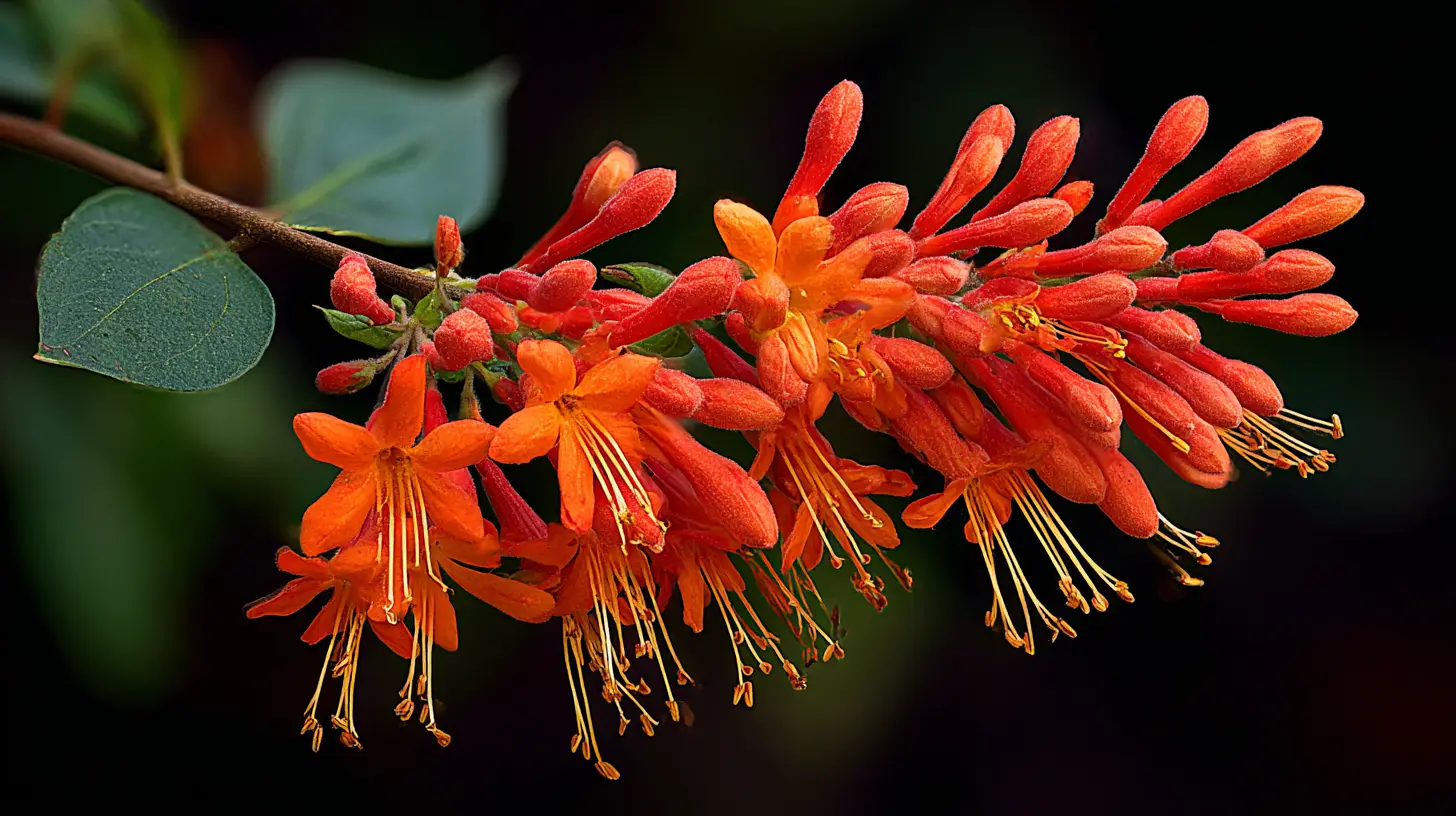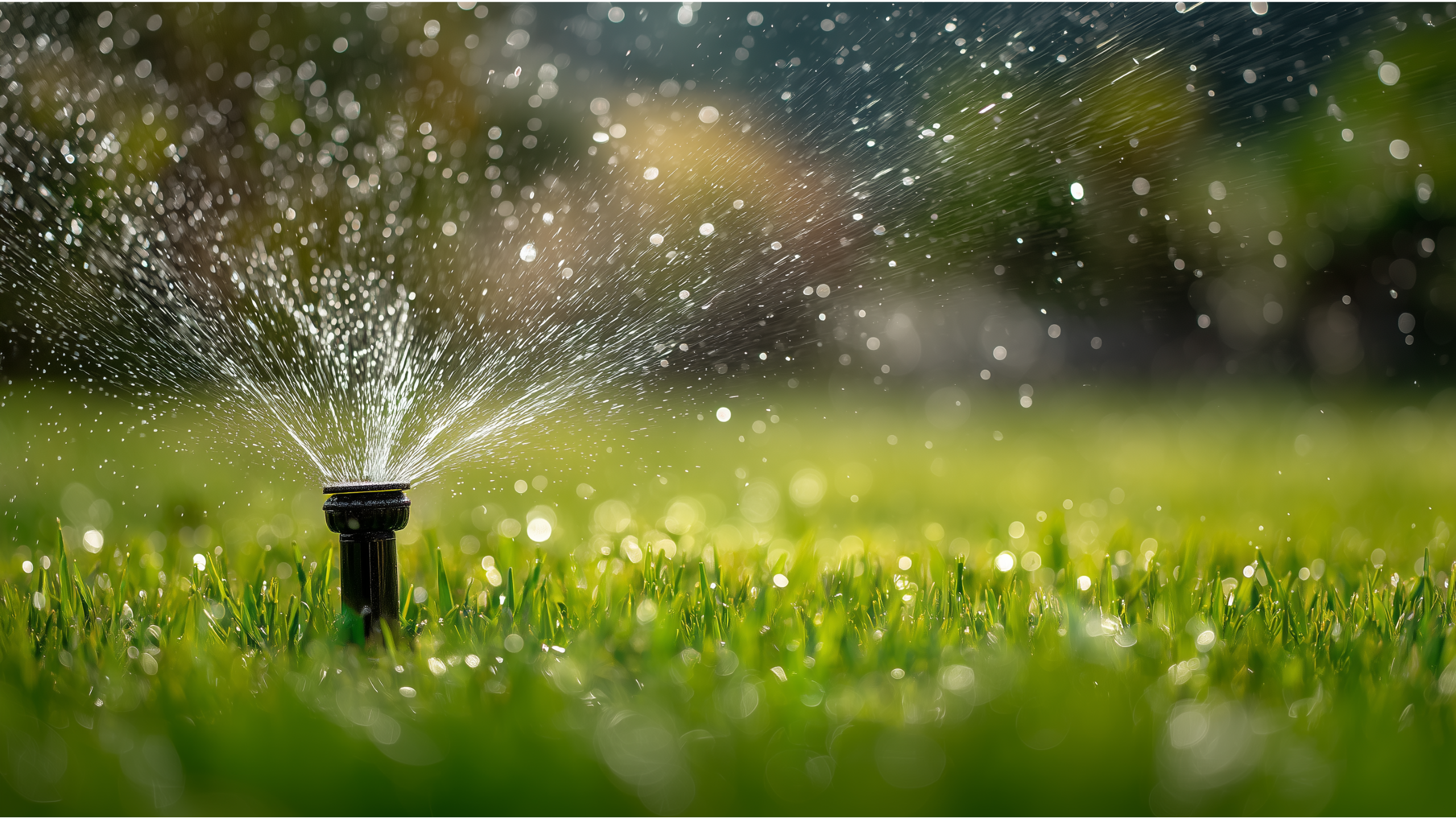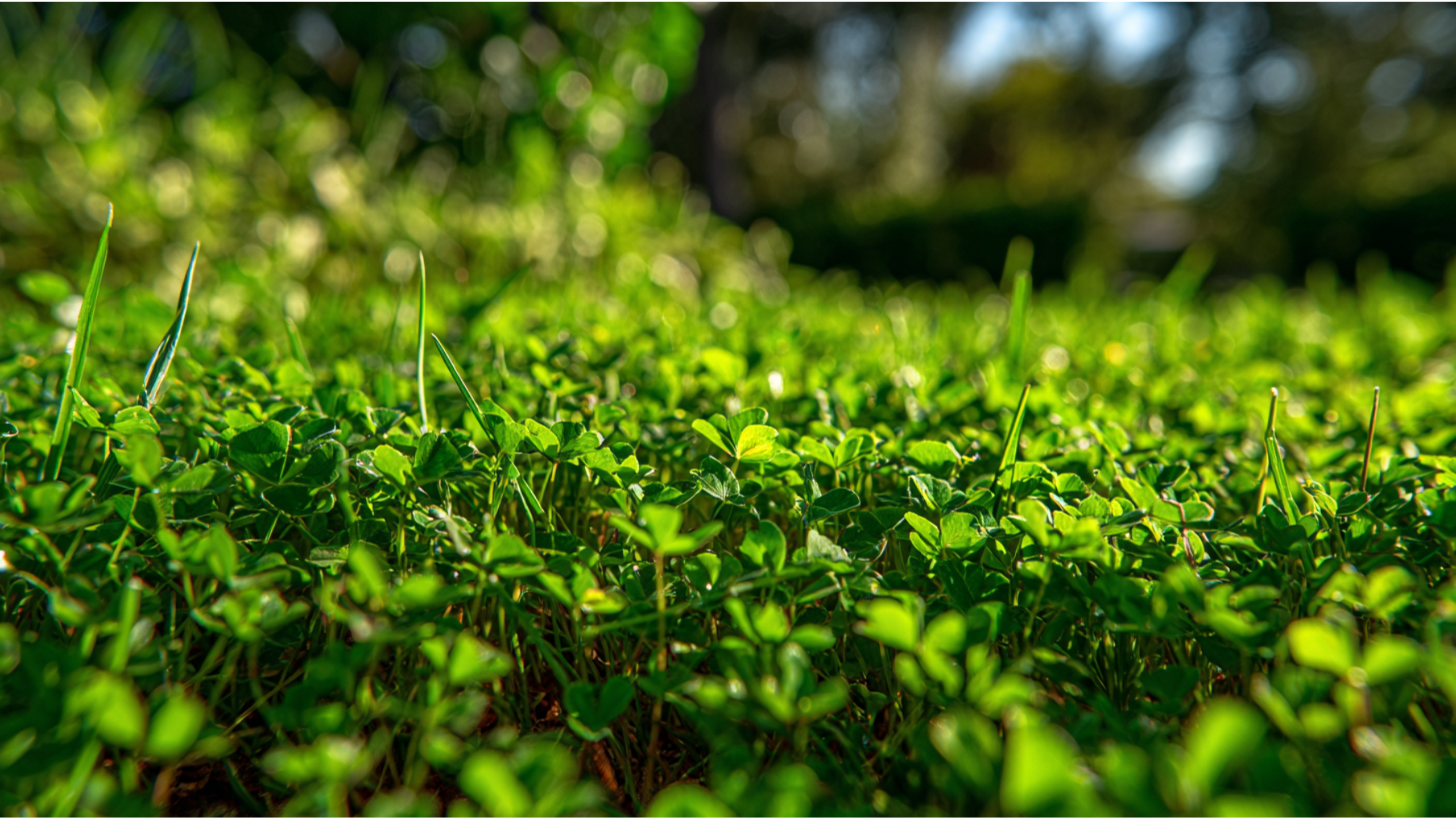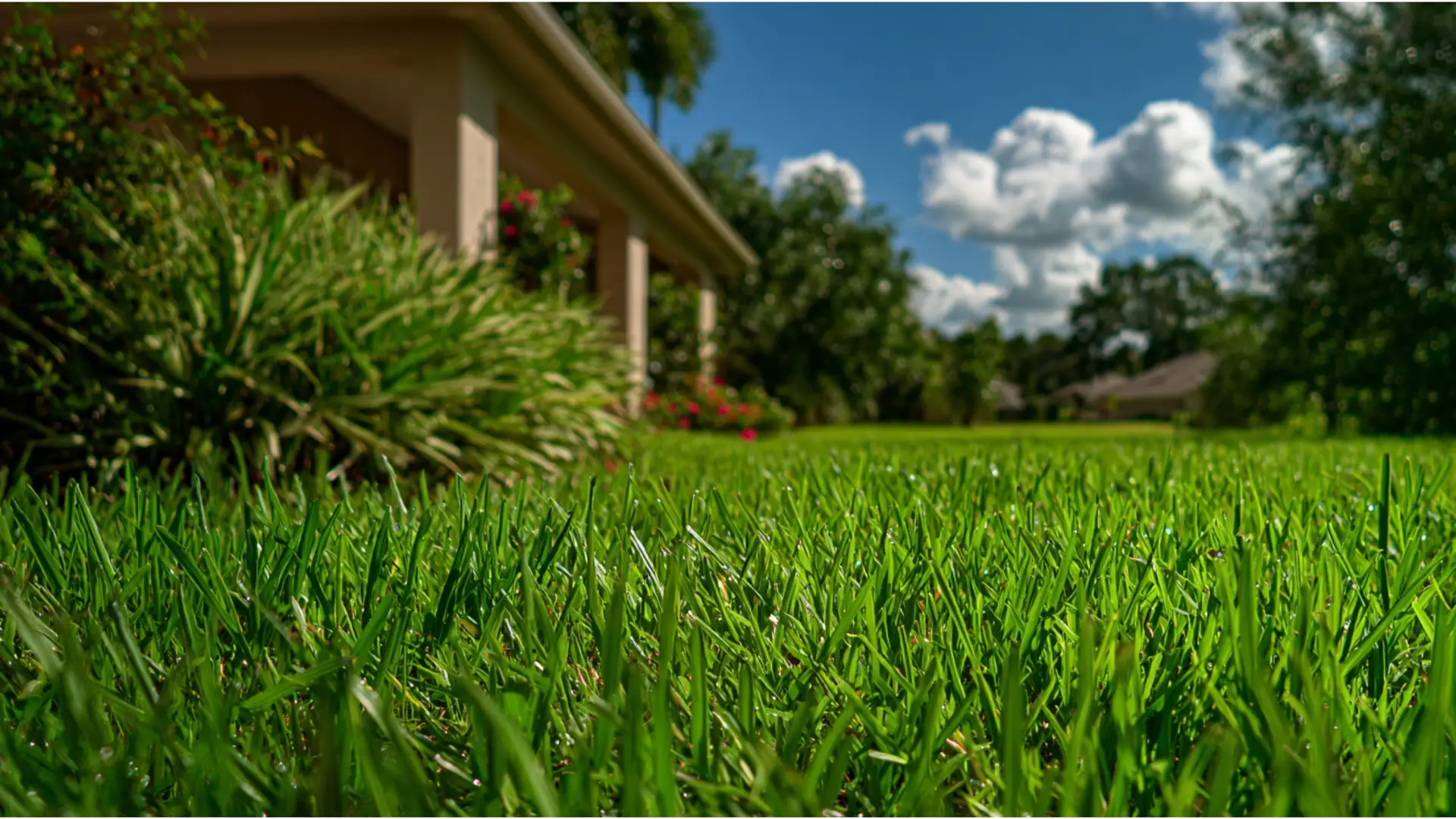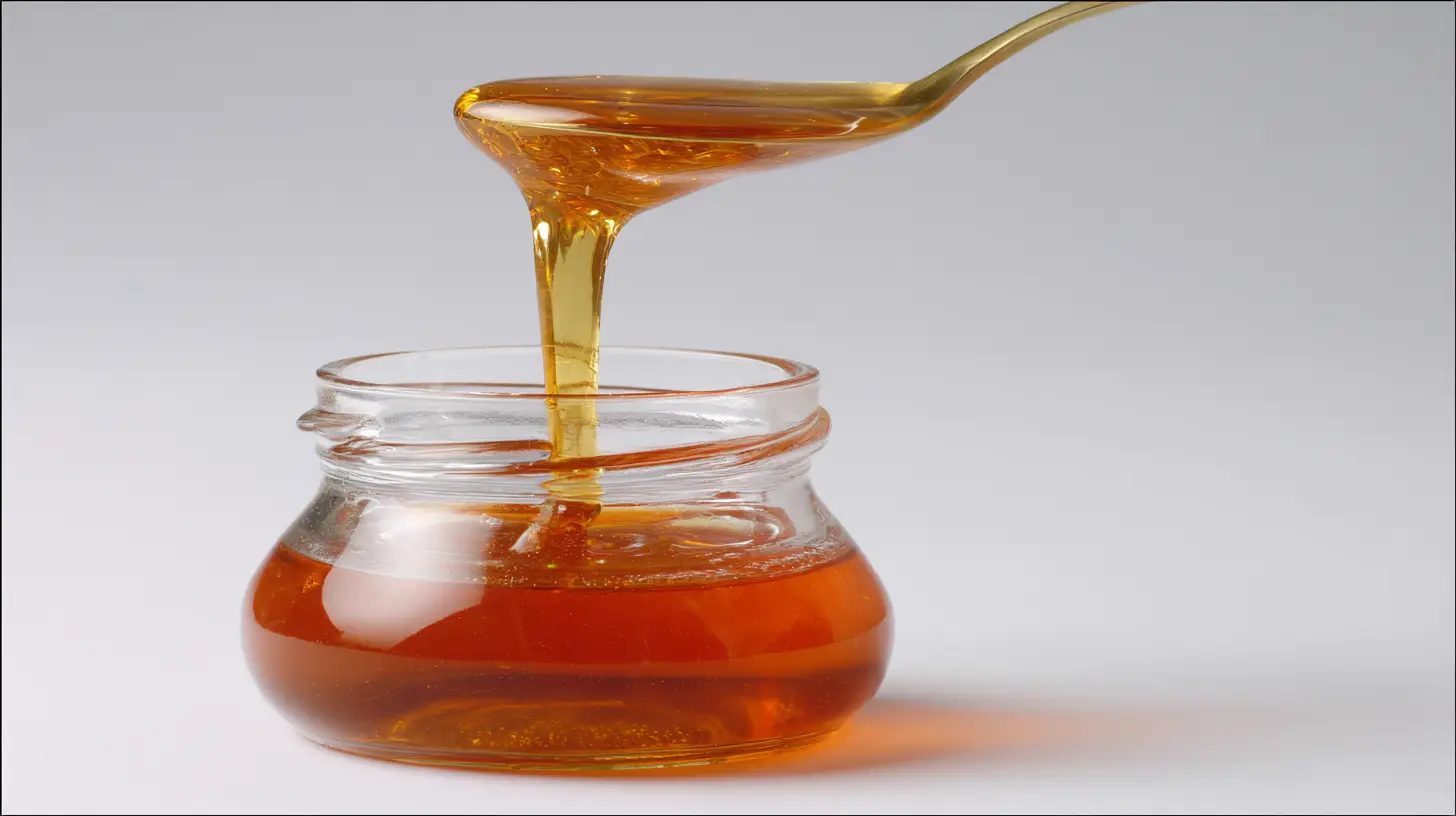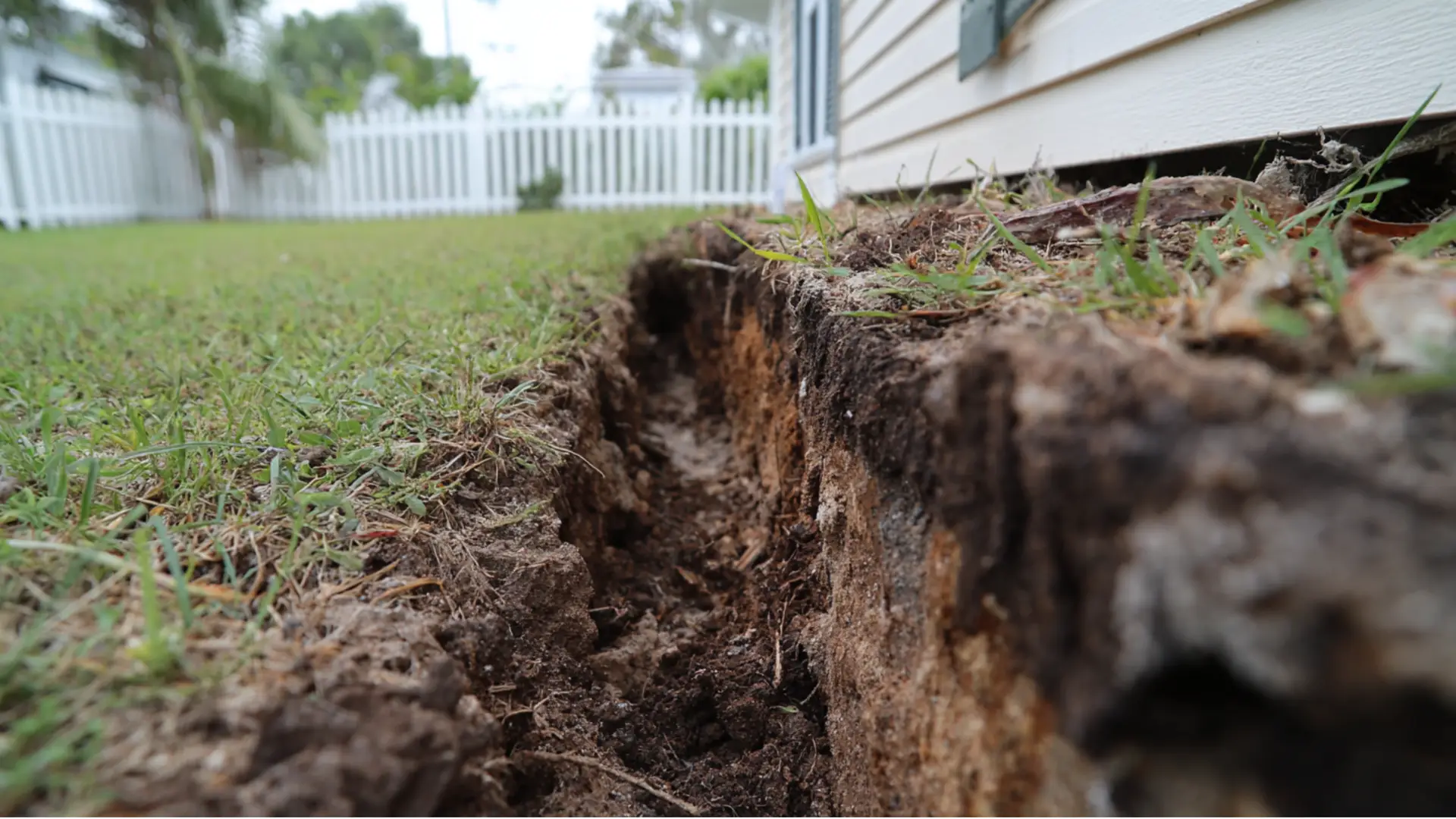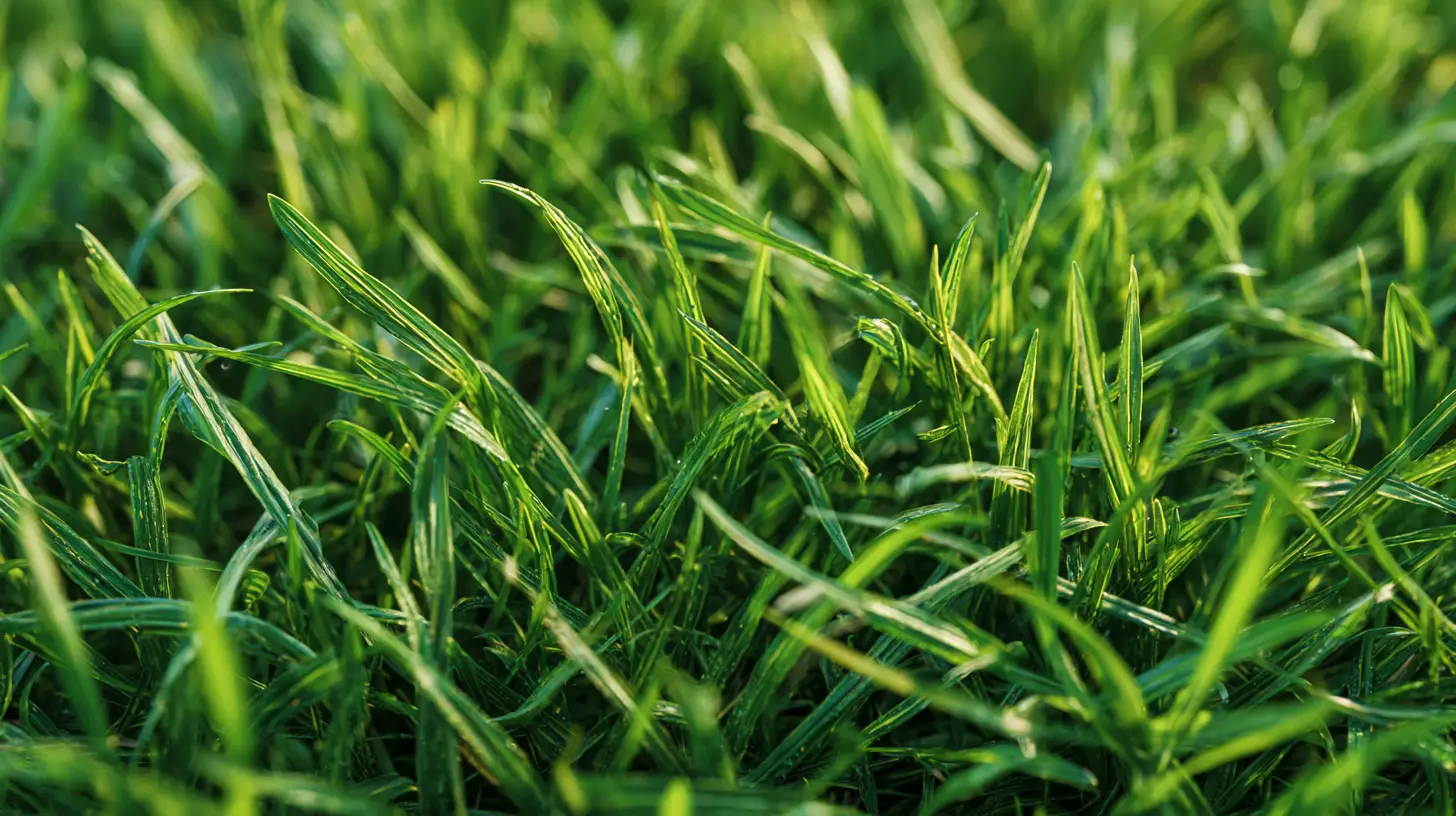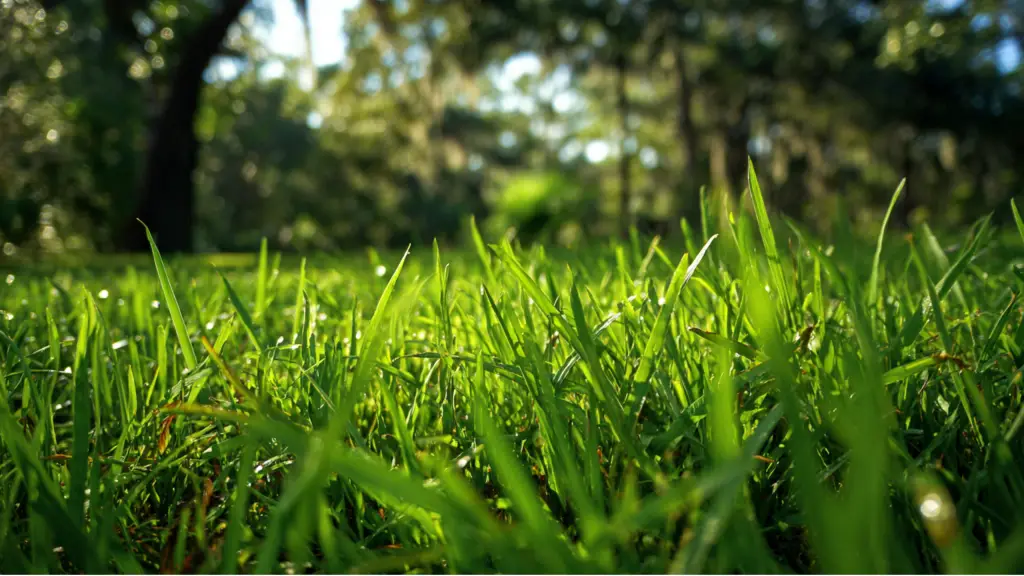
Table of Contents
Owning St Augustine grass in Parrish, FL is like adopting a celebrity pet—it looks gorgeous, but it’s moody, needy, and will throw tantrums if you don’t keep up with its demands. Sure, when it’s thriving it’s the thick, green carpet you brag about. But let it get stressed by chinch bugs or starved of nitrogen, and suddenly your lawn is auditioning for a horror film called Patchy Brown Mess.
Key Takeaways
- High-maintenance grass: St Augustine looks amazing but acts like a diva—feed it, water it right, and keep it tall.
- Smart watering is everything: Twice a week, deep soaks only. Daily sprinkles = fungus city.
- Chinch bugs are Parrish’s biggest lawn enemy: Yellow patches that don’t bounce back after watering? That’s them.
- Sun is its best friend: Thrives in full sun, tolerates some shade, but hates being stuck under thick oak cover.
- Fertilizer schedule matters: Spring = nitrogen kick, summer = maintenance, fall = balanced blend, winter = potassium support.
- Watch the Parrish rain cycles: Sandy soil leaches nutrients fast, and storms can wash treatments away—timing is everything.
Spring in Parrish: The Awakening
When temps hit the 70s and your grass starts greening back up, it’s basically telling you, “Feed me, water me, love me.”
- Mowing: Set your mower to 3.5–4 inches. St Augustine loves it tall—it shades out weeds and keeps roots cooler. Scalping it is like giving it a bad haircut—it’ll take weeks to recover.
- Fertilizer: Use a slow-release nitrogen (1 lb of actual nitrogen per 1,000 sq. ft). Organic folks can lean on compost or Milorganite. Remember, Parrish’s sandy soil doesn’t hold nutrients long—it’s like pouring coffee through a sieve.
- Weed prevention: Drop a pre-emergent herbicide in March. Dollarweed, crabgrass, and spurge are lurking, waiting to embarrass you.
Nerd fact: A healthy St Augustine lawn in Florida has about 300–500 shoots per square foot. That density is what makes it look so thick—but also why it guzzles fertilizer like a teenager after football practice.
Summer: Florida Turns Up the Heat
Welcome to chinch bug season. Temps are in the 90s, humidity is suffocating, and your grass is fighting for its life.
- Watering: Twice a week, about ¾–1 inch per session. Early morning only—night watering equals fungus hotel. A tuna can trick works—put a can on the lawn, run sprinklers until it fills to an inch. That’s enough.
- Chinch bugs: These are the enemy. They suck sap from grass blades, leaving irregular yellow patches that spread like wildfire. By the time you notice, they’ve already set up a block party. Treat with bifenthrin or fipronil, or go organic with beneficial nematodes.
- Fungus patrol: Brown patch and gray leaf spot love summer moisture. If you see circular brown areas with a smoky ring, it’s probably fungus. Fungicides like azoxystrobin help, but prevention = less night watering + proper mowing.
- Mowing frequency: Every 7 days, never cutting more than 1/3 of the blade. Overcutting stresses the grass and invites weeds.
Stat check: The UF/IFAS Extension found that chinch bugs cause millions in turf damage every year in Florida. They’re basically Parrish’s version of a lawn mob.
Fall: Still Feels Like Summer
Parrish doesn’t really “do” fall—it’s just summer with pumpkins.
- Fertilizer: Apply a balanced mix in early October (think 15-0-15). Skip nitrogen-heavy stuff after that—feeding late encourages tender growth that cold snaps can kill.
- Weeds: Cool-season weeds like annual bluegrass start showing up. A post-emergent herbicide or vinegar-based organic spray can keep them from spreading.
- Watering: Rain eases up, so stick to the inch-per-week rule, but watch for drier spells.
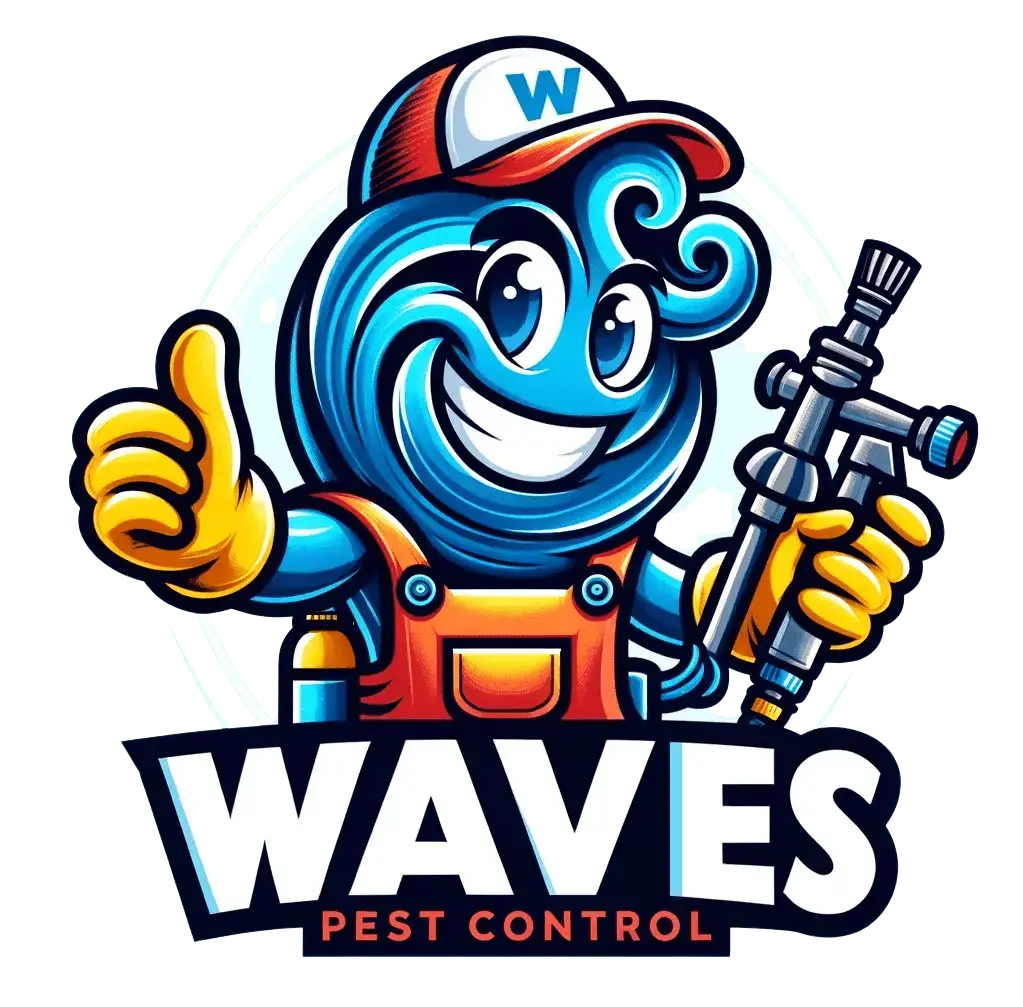
Get Pest-Free Today!
Trust Waves Pest Control for expert pest solutions in Florida. Call now or request your free quote online!
Request a QuoteWinter: The Chill Season (Kind Of)
In Parrish, your lawn doesn’t go fully dormant unless temps dip into the 40s for weeks. Usually, it just slows down.
- Mowing: Still keep it tall, but less often—maybe every 2–3 weeks.
- Fertilizer: Switch to potassium (like 0-0-60) in December. This boosts stress resistance without pushing growth. Skip nitrogen.
- Shade watch: St Augustine tolerates partial shade, but full shade? Forget it. If your lawn under the oaks looks rough, consider mulch beds instead of beating your head against the St Augustine wall.
Organic vs. Conventional Care in Parrish
- Organic playbook: Compost top-dressing, seaweed extract sprays, corn gluten meal (natural pre-emergent), nematodes for pest control. Takes longer, but healthier soil = healthier grass.
- Conventional route: Fertilizer blends, synthetic fungicides, systemic insecticides for chinch bugs. Faster results but more runoff risk—especially with Parrish’s frequent summer storms.
Parrish sits in a zone where stormwater runoff drains to the Manatee River and Tampa Bay. Overfertilizing = feeding algae blooms. So go easy on nitrogen.
Frequently Asked Questions (FAQs)
Why is my St Augustine grass yellow even though I fertilize?
Likely iron deficiency. Sandy soil leaches nutrients fast. A liquid iron spray greens it up within days.
Can I plant St Augustine sod in winter?
You can, but growth is sluggish. Best results come from spring through early summer when soil temps are warm.
What’s the best mowing height for shade?
4 inches. Taller blades capture more light, which is critical under tree cover.
My lawn has mushrooms everywhere—should I freak out?
Nope. Mushrooms = organic matter breaking down. They’re a sign your soil biology is alive and kicking. Just kick them over if they bug you.
Is watering every day a good idea?
Nope. That invites fungus, shallow roots, and skyrockets your water bill. Stick to deep, infrequent watering.

